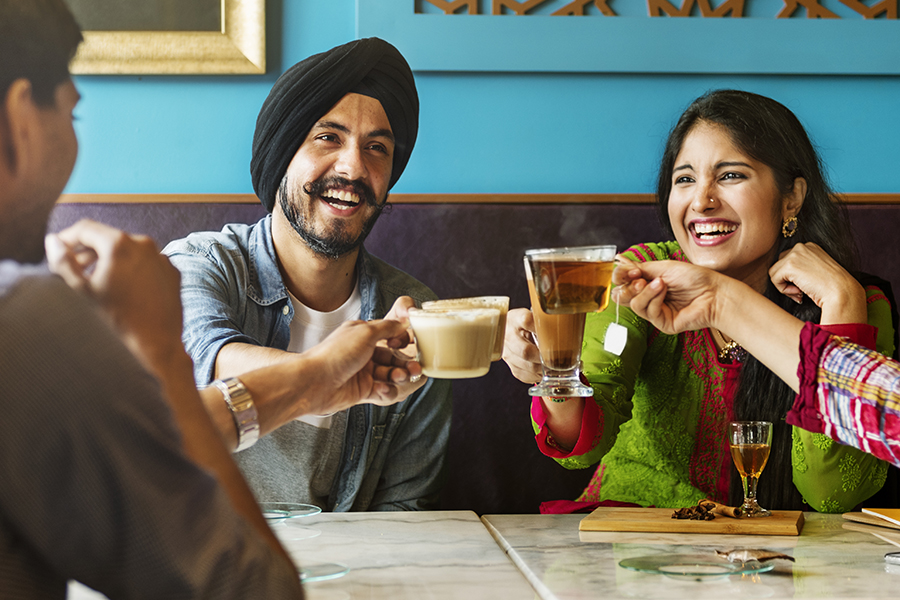[ad_1]

Several food and beverage brands have relied mainly on digital tools and storytelling to drive demand the past few years. Image: Shutterstock
Tea and coffee have come a long way from being available in just two options—with and without milk and typically served hot. Millennial tea and coffee drinkers now want their cuppa in various flavours, served at different temperatures, brewed in different techniques, and vegan too. To make the most of this growing trend, marketers have been investing in innovation and marketing with new brands being launched almost every week. Ad spends almost across brands have gone up, with a significant portion of this ad money going into digital, due to the pandemic-driven spike in online buying. While newer consumers might like their beverage served cold, the Indian tea-coffee category is hot, hot, hot.
Drip, pour, shake, stir
For Bharat Sethi, founder of D2C brand, Rage Coffee, every person who has access to the internet is a prospective customer these days.
While traditional brands like Luxmi Group, Tata Tea and others are experimenting and innovating, new age labels like Sleepy Owl, Woke Coffee, Blue Tokai, Country Bean, Slay Coffee, Rage Coffee, Bili Hu and many others are also propelling the growth story of the category with unique offerings and disruptive marketing strategies.
What’s written in the leaves
Changing perceptions has been one of the biggest challenges for brands in the segment.
“Indian coffee is now increasingly being appreciated by customers, which is encouraging for brands like us to bring more to the table. The category has gone through a revolution in the past few years, and the growth in homegrown coffee brands is a testament to this,” Thandi says.
The shifting definition of a coffee or tea experience is part of what’s changing the category.
“What is impressive is that these brands aren’t just packaging and branding the product but are actually focused on the development of it in a professional manner,” she says.
Focus on millennials and younger consumers
Rage Coffee collaborates with distributors in their city, analyses data from retail outlets, and then creates their market entrance strategy. The brand’s media promotion budget this year is more than Rs10 crore. 70 percent of their offline wholesale business comes from tier-II cities.
While the clientele as Sethi says is anyone looking to improve their everyday coffee experience, a particular sphere of market that they’ve appealed to is between 18 and 25 years old.
“Younger audiences are indulging in wellness teas, thanks also to the health awareness that came with the pandemic which laid bare the necessity to maintain a healthy lifestyle. The shift in lifestyle of the consumer is definitely compelling for us to keep innovating and introducing teas that are relevant to their wellness needs,” he says.
Investments in the right digital channels have helped the brand reach a higher audience and generate awareness, and helped them build strong funnels of growth through targeting sharply, Chatterjee tells us.
“We have also managed to reach a wider global audience through digital marketing tools,” he says.
The growth of the online marketplace
Kaapi Machines, for instance, which was established in 2007 to address the gap of efficient and sophisticated coffee equipment in the country, is witnessing strong growth in all segments including coffee roasters, café equipment as well as specialty coffee and manual brewing ranges.
In the last two years, Kaapi Machines has been part of the launch of close to 20 new coffee brands, with a lot of new coffee roasters setting up shop.
“This was an area dominated by a few Italian and large Indian brands – but the market has truly opened up, with a lot of new roasteries, who are innovating and growing the market,” says Abhinav Mathur, CEO and managing director at Kaapi Machines.
Taking digital to the next level, Kaapi is working on an iOT project.
“We are ready with our own Kaapi-iOT system, which allows any customer in a retail space or office, to dispense coffee from a machine using just their phones. Millennials also do not like to carry cash around—so this system allows them to pay using their mobile wallets, pick up their favourite coffee from the station and walk away,” Mathur says.
The brand’s consumer-facing offering, Something’s Brewing, saw their monthly revenue jump 5x since their launch in 2020 with coffee connoisseurs experimenting with their drink.
In sync with the growth, the brand is also increasing their digital spends by up to three times this year compared to 2021.
Check out our end of season subscription discounts with a Moneycontrol pro subscription absolutely free. Use code EOSO2021. Click here for details.
[ad_2]
Source link














